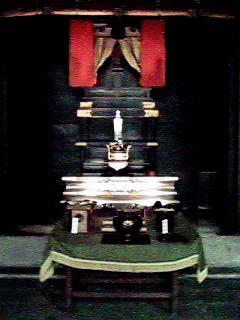Isikawa Jun was born at Asakusa, Tokyo, Japan on March 7 1899. Asakusa is a downtown area of Tokyo and a center of Edo culture. His real name is Kiyosi ("Jun" is a Chinese-like-pronunciation of "Kiyosi"). His father, Siba Atusi, was a banker and had been adopted from the Isikawas which had been Hatamoto (samurai under the Syogun), to the Sibas which had been Fudasasi (banker and rice merchant in Edo period). Jun, second son of Siba Atusi, was regarded as heir of the Isikawas and was bring up in the neighboring house of his grand father, Isikawa Sesai, who had been professor of Syoheko at Yusima, the Bakuhu's academy of Neo-Confucianism, and he taught Neo-Confucianism to his young grand-son, Jun.
He was officially adopted to the Isikawas in 1914. From the point of view of rigorous Neo-Confucianism, he returned to his original lineage.

He went to the Keiogizyuku university in 1916, but left it in half a year. In the next year he went to faculty of French in Tokyo Gaikokugo Gakko , ( in present, the Tokyo University for Foreign Studies). He finished it to enter the Bank of Japan, but left it in a moment. In 1923, he moved to the Kikuhuzi Hotel at Hongo, where dwelt many young writers, artists and anarchists. He made friends with Yamanouti Yosio (famous man of French letters) there and translated Les lilies rouges of Anatole France on Yamanouti's recommendation.
In 1924 he got a job as tutor of French in Hukuoka High-school (in present, a faculty of liberal arts in the Kyusyu university), but, in the next year, he was advised to resign it because of his participation in student movement. He returned to Tokyo and began bohemian life. Moving from cheap pensions to cheap pensions in Tokyo back streets, he translated Andre Gide's Les Caves du Vatican and L'Immoraliste, Moliere's Les Misantholope and Tarchuf.
In 1935 he published his first short story, Kazin (A beautiful woman) and got the Akutagawa Ryunosuke Award by Hugen (The Samantabhadra) in the next year. He was, then, thirty-seven years old. It seemed so late because Akutagawa Award was, in those days, regarded as one for young writers in their twenties. He published The Samantabhadra and other stories and Yamazakura (Wild Cherry Blossoms). In 1936 his Marusu no Uta (Song of Mars) was i-nhibited to sold by censorship, because of its messages against growing militarism.

Although the censorship was severer and severer, he published his first novel, Hakubyo (Plain Sketch, 1940) in which he criticized Stalinism, and his first long critic work, Mori Ogai (On Mori Ogai, 1941), in which he evaluated for the first time Mori's biographies of three Confucianists (Sibue Tyusai, Isawa Ranken and Hozyo Kate) in the end of Edo period. In the war, he could not write ficions but he published biographies for children and translations of Japanese classics. He said that he would go to Edo to study the authentic literature of Japan.
In 1945 Japan lost the war and he re-started to write short stories. Although the GHQ of United Nations censored Ogon Densetu (Golden Legend, 1946), he published many master pieces, for examples, Yakeato no Iesu (Jesus in the Ashes, 1946) and Syozyo Kaitai (Conception of a Maiden, 1948) in which he expressed ideas of the Neo-Confucianism in Christian figures. In those days, Abe Kobo became his pupil and visited him frequently. In 1951 he wrote a preface for Kabe (The Walls), by which Abe got the Akutagawa Award.
In 1957 he got the Gezyutu Sensyo (National Prize for Arts by the minister of Education) by Sion Monogatari (The Archers, 1956). When he published serially Sinsyaku Koziki (Another Translation of the Koziki), he wrote Hatiman Engi (Origins of Gods of Hatiman, 1957) and Syura (Like Demons, 1958). He explored the origin of Japanese nation and unveiled hidden complications between the Zyomons (Japanese natives) and the Yayois (New-comers who conquered the Jomons) through these stories. He published an auto-biographical novel, Hakutogin (White-haired Ballads), in which he described young days with anarchists in Taisyo era.
In 1964 he published a novel in magic realism, Aratama (Wild Soul) and went to a journey to USSR and western Europe with Abe Kobo. It was his first trabel abroad. Out of this travel journal, he edited Seiyu Nitiroku (A Record of a Journey West, 1965). In 1967 he joined to Kawabata Yasunari, Misima Yukio and Abe Kobo in the statement for protecting Chinese leanings and arts from destruction of the Mao's Cultural Revolution.
In 1975 he took the witness stand for freedom of speech in the trial of Yozyohan Husuma no Sitabari (Manuscripts Discovered behind a Screen of a Small Bedroom), which is a pornographic master piece pretended in classic style by Nagai Kahu, at the request of Maruya Saiiti. Maruya is a pupil of Isikawa and one of the greatest critic in Japan.
In 1980 he published Kyohuki (Tales of Crazy Winds). Tales of Crazy Winds is a colorful, powerful, eventful and comical novel in SF style and with which he got many young readers. He also published Edo Bungaku Syoki (A brief Survey of Edo Literature, 1980), by which he got the Yomiuri Literary Award. In 1986 he published Tenmon (Heavenly Gates), an elegant love story, nevertheless he was 87 years old.
When he was writing the last novel, Hebi no Uta (A Song of Snakes, 1988), he died of lung cancer on December 1987.